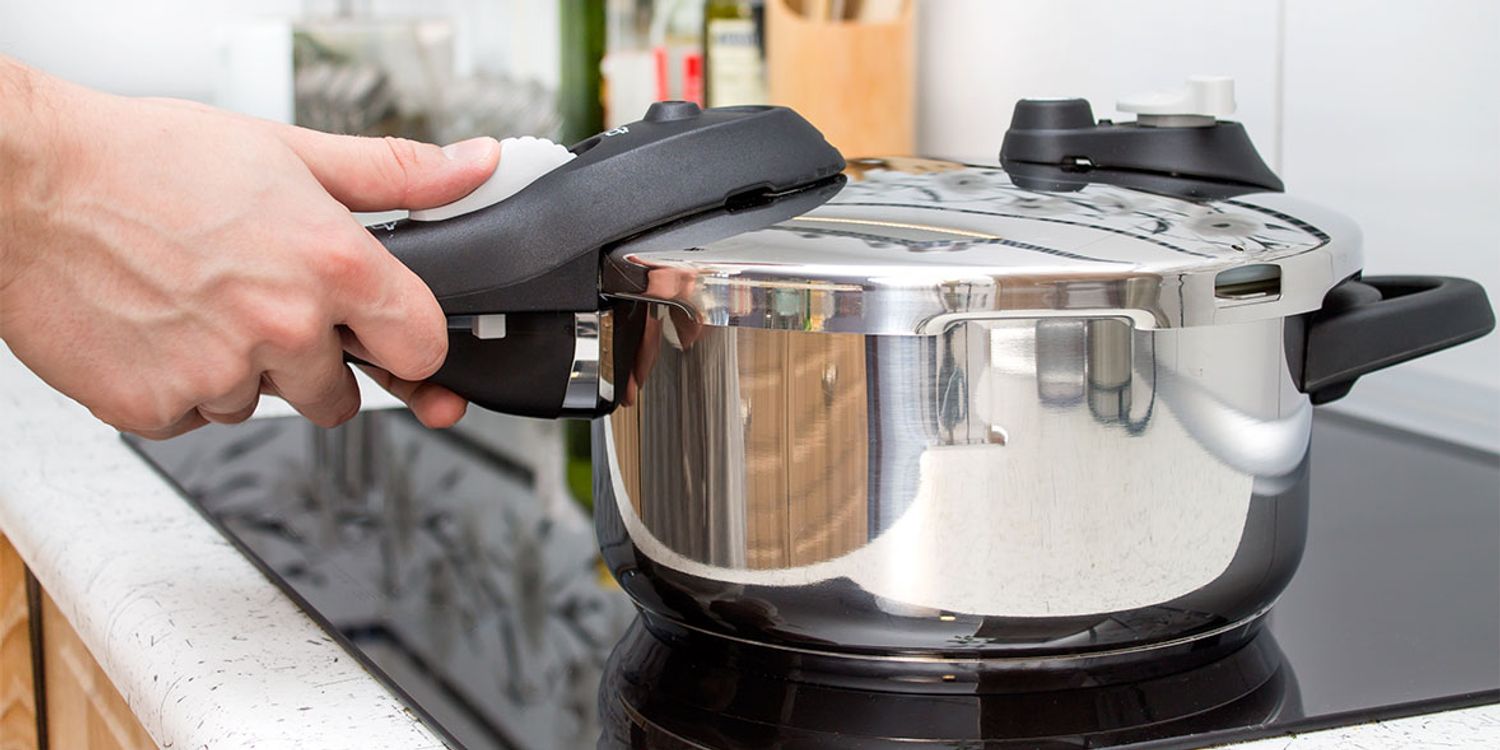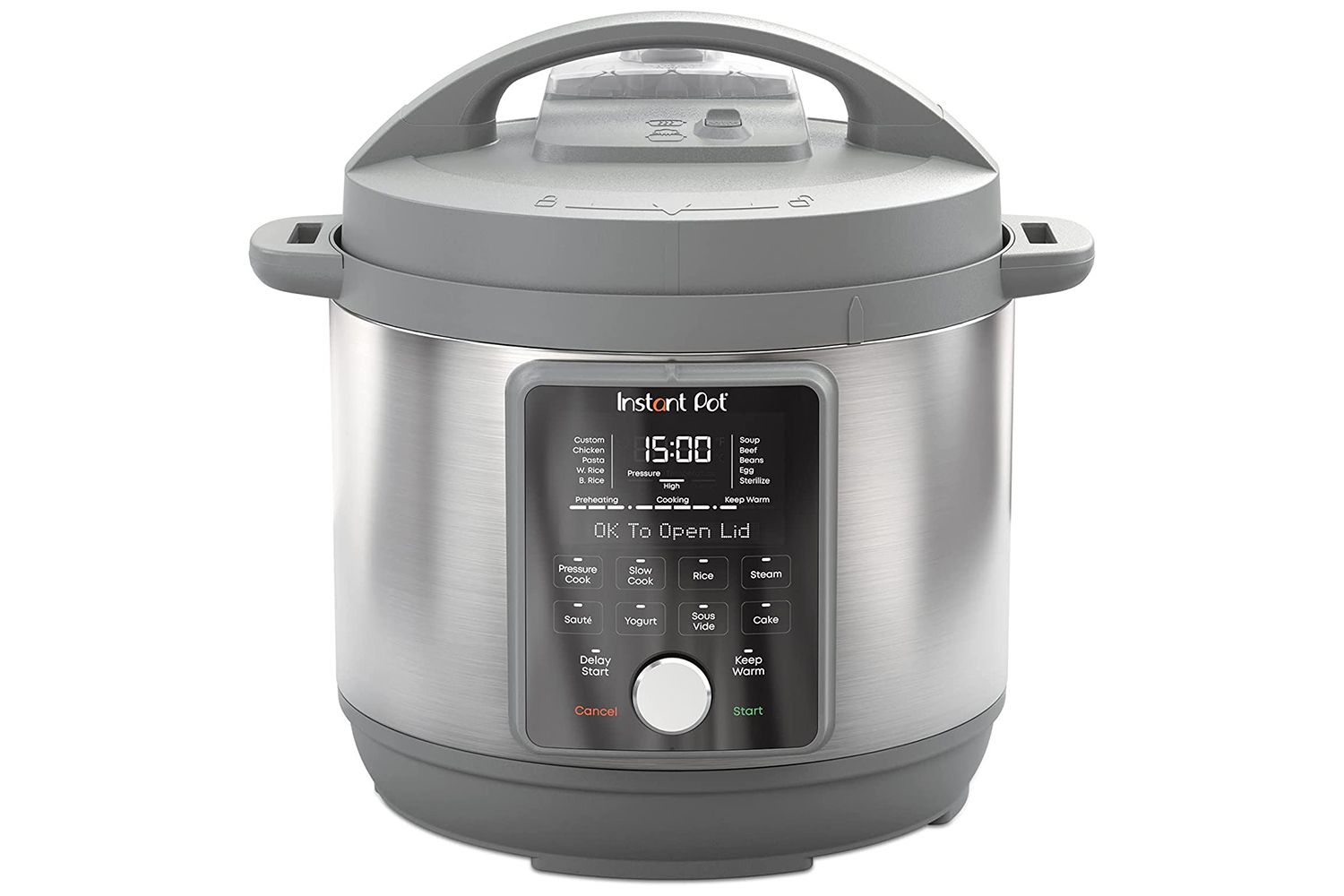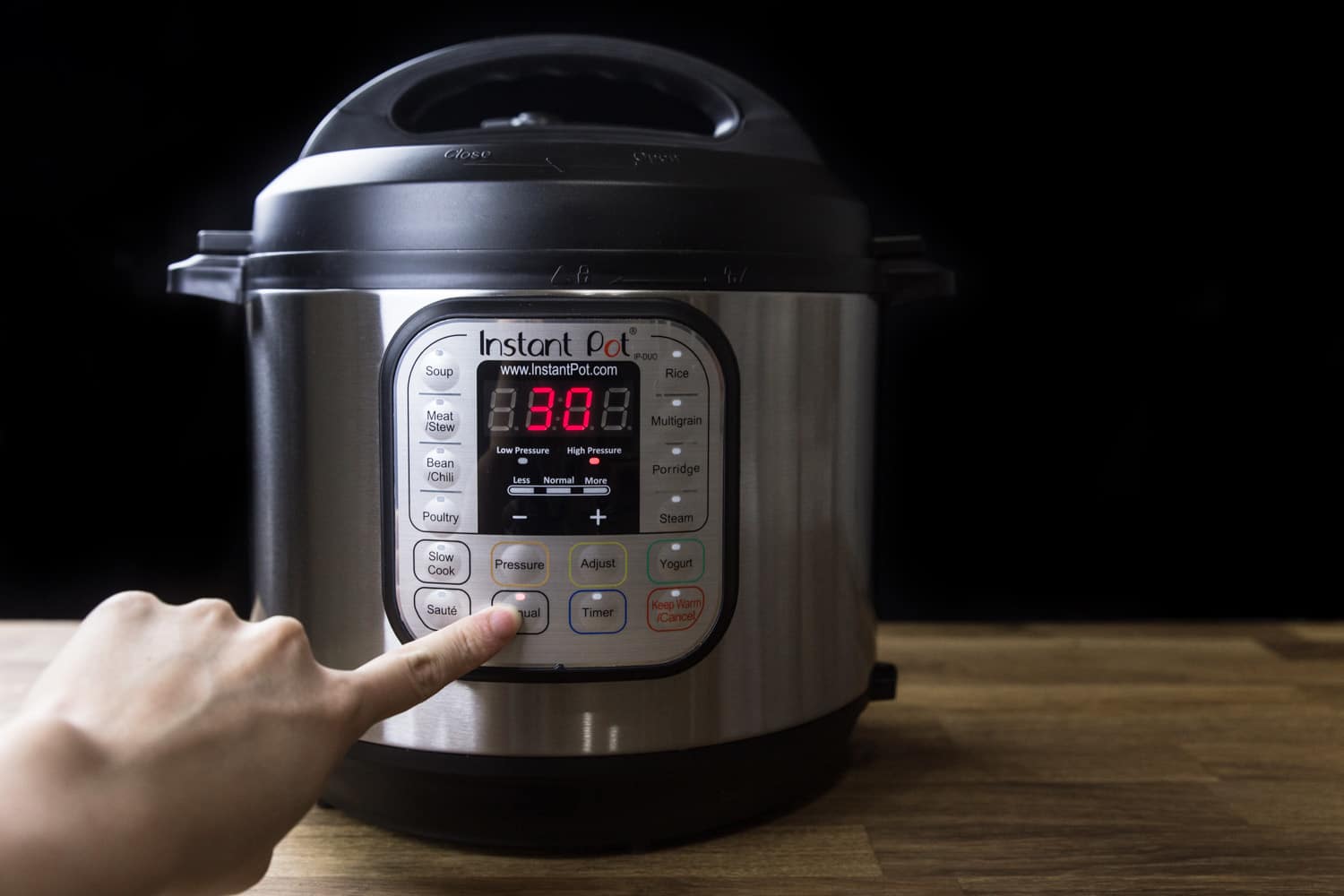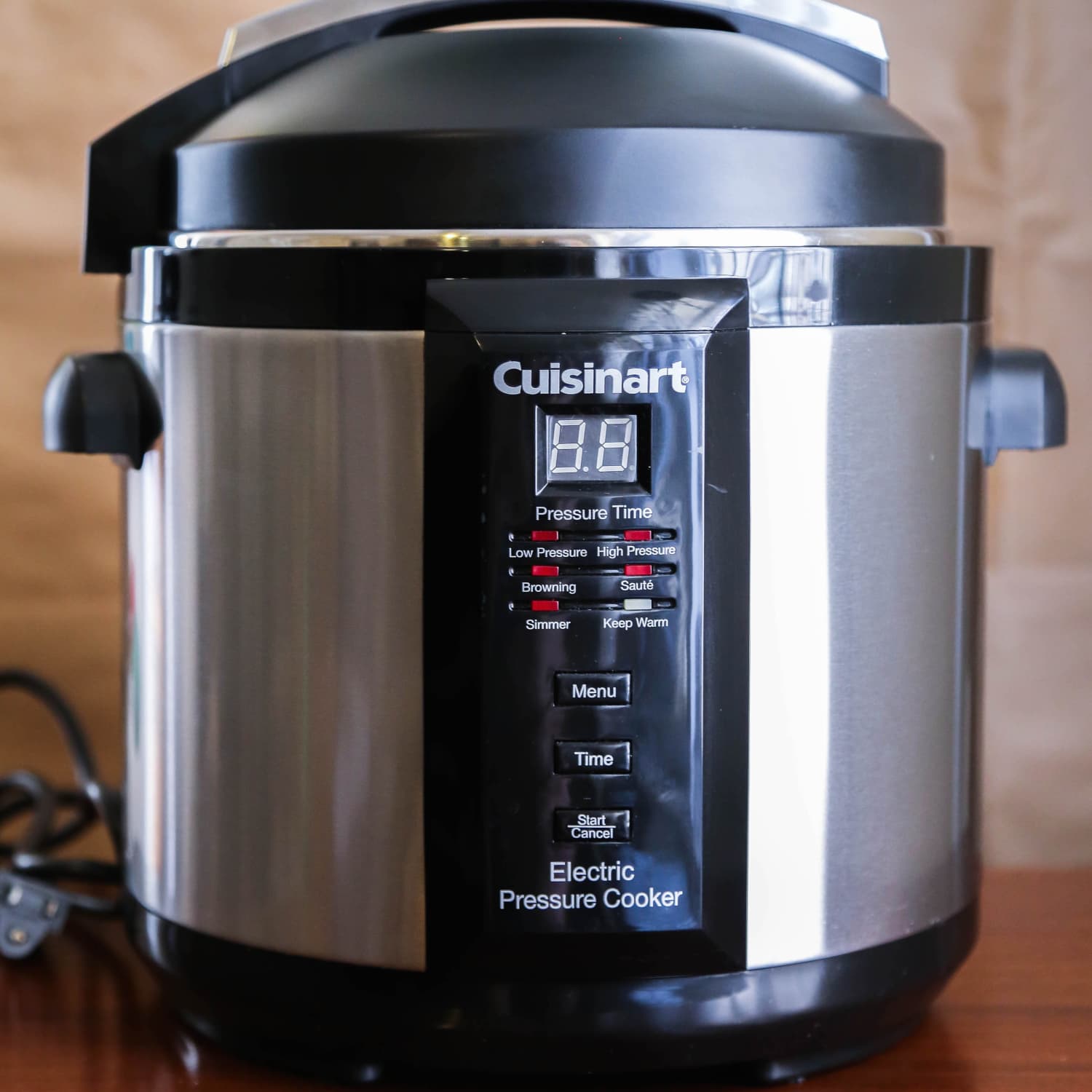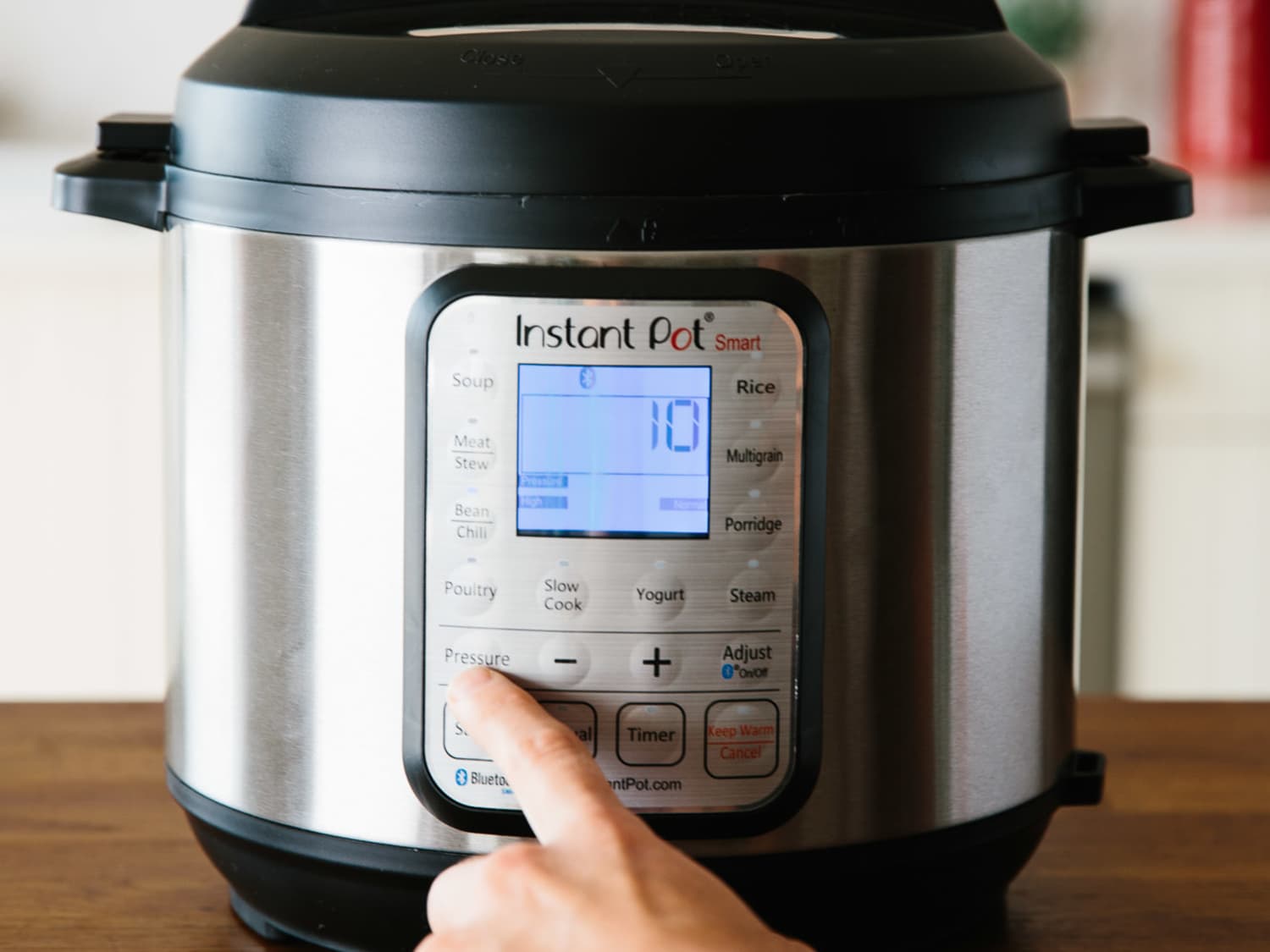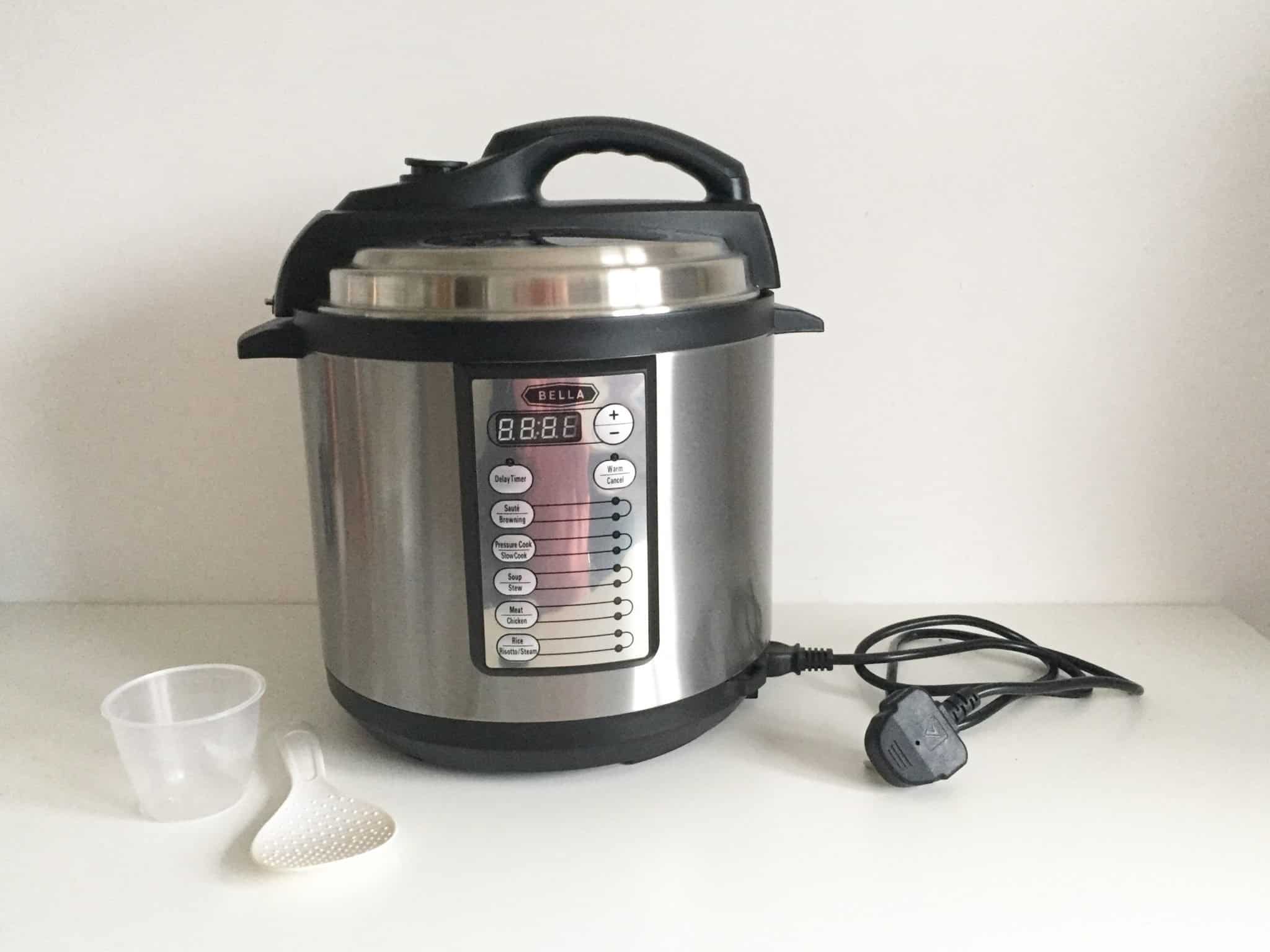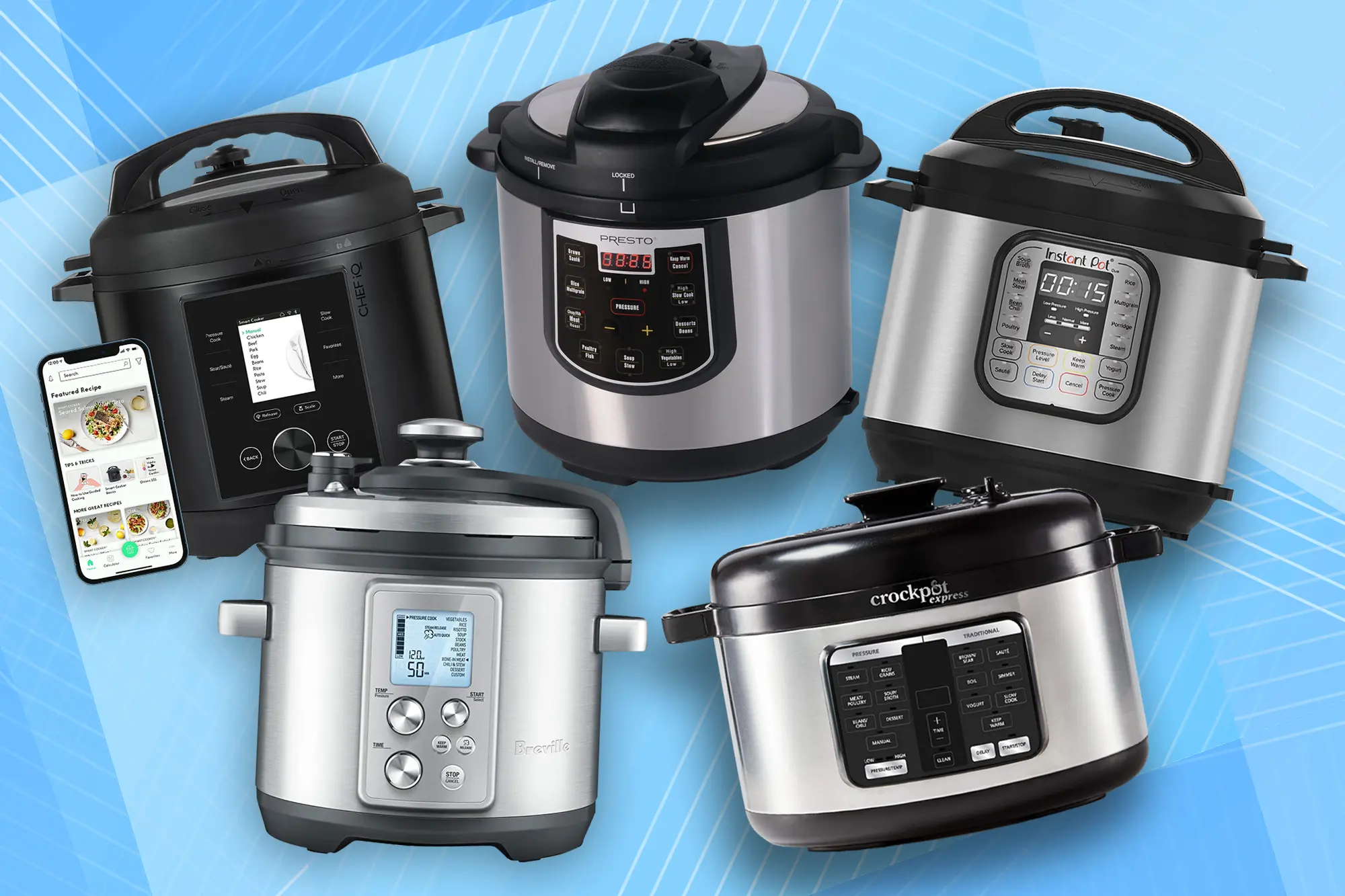Introduction
Welcome to the world of electric pressure cookers! These modern kitchen appliances have revolutionized cooking by offering quick, convenient, and delicious meals. Electric pressure cookers use the power of steam and pressure to cook food faster than traditional methods, making them a must-have for busy households and cooking enthusiasts alike.
One crucial aspect of an electric pressure cooker is its ability to create a tight seal, which ensures that no steam or pressure escapes during the cooking process. The seal is vital for maintaining the appropriate temperature and pressure inside the cooker to cook food thoroughly and efficiently.
In this article, we will delve into the topic of electric pressure cooker sealing temperatures and explore why a proper seal is essential. We will also discuss the factors that influence the sealing temperature and offer tips for achieving and maintaining a perfect seal in your electric pressure cooker.
Understanding the sealing process and how to troubleshoot any issues that may arise will allow you to make the most of your electric pressure cooker and create delicious meals with confidence.
How Electric Pressure Cookers Work
Before we dive into the sealing temperature of electric pressure cookers, let’s take a moment to understand how these incredible appliances work. Electric pressure cookers are designed to create a sealed, high-pressure environment that significantly reduces cooking time while tenderizing and infusing flavors into food.
The main components of an electric pressure cooker include a cooking pot, heating element, pressure release valve, and sealing mechanism. The cooking pot is where the food is placed, while the heating element generates the heat necessary to create steam and increase the internal pressure.
As the electric pressure cooker heats up, the liquid inside the cooking pot begins to boil, producing steam. This steam increases the pressure inside the cooker, which in turn raises the boiling point of the liquid. The higher boiling point allows the food to cook more rapidly, resulting in reduced cooking times.
The pressure release valve plays a critical role in regulating the pressure inside the cooker. It allows excess steam to escape when needed, preventing the pressure from becoming too high and causing safety concerns. The sealing mechanism, typically a rubber gasket or silicone ring, ensures a tight seal between the lid and the cooking pot, preventing steam from escaping during the cooking process.
Once the desired cooking time has elapsed, the pressure can be released manually or naturally. Manual pressure release involves using the pressure release valve to quickly release the steam, while natural pressure release allows the pressure to gradually decrease on its own. The choice of pressure release method depends on the recipe requirements and personal preference.
With their ability to cook food quickly, retain nutrients, and enhance flavors, electric pressure cookers are gaining popularity in kitchens around the world. Now that we have a basic understanding of how they work, let’s explore why sealing is a crucial aspect of electric pressure cooker operation.
The Importance of Sealing in Electric Pressure Cookers
The sealing mechanism in an electric pressure cooker is of utmost importance as it plays a vital role in achieving optimal cooking results. A proper seal ensures that steam and pressure are contained within the cooker, creating an airtight environment that allows for faster and more efficient cooking.
One of the primary reasons why sealing is crucial is that it allows the pressure cooker to reach the desired temperature quickly. As the pressure inside the cooker increases, the boiling point of the liquid also rises. This elevated temperature helps to cook the food thoroughly and lock in flavors, resulting in tender and flavorful dishes.
In addition to achieving the right temperature, a tight seal prevents the escape of steam during the cooking process. Steam is responsible for transferring heat to the ingredients, facilitating the cooking process. If the seal is compromised, steam will escape, leading to a loss of heat and slower cooking times.
Sealing also ensures that the pressure inside the cooker remains consistent throughout the cooking process. A stable pressure level is essential for achieving predictable and reliable cooking results. Without a proper seal, the pressure may fluctuate, leading to uneven cooking and potentially undercooked or overcooked food.
Furthermore, a well-sealed electric pressure cooker helps to retain moisture in the food. As the cooker traps the steam and moisture generated during cooking, it prevents the food from drying out. This is particularly beneficial when cooking meats, as it helps to keep them juicy and flavorful.
From a safety perspective, a secure seal is vital to prevent any accidental steam releases that could lead to burns or other injuries. Electric pressure cookers are equipped with built-in safety features, such as a locking lid and pressure release valve. However, a proper seal is an additional layer of safety, ensuring that steam and pressure are only released when intended.
In summary, the sealing mechanism in an electric pressure cooker is fundamental to its functionality and overall cooking performance. It allows for efficient heat transfer, consistent pressure levels, moisture retention, and enhances safety. Understanding the importance of sealing will help in ensuring that your electric pressure cooker operates optimally and produces delicious meals in a fraction of the time compared to traditional cooking methods.
Factors Affecting the Sealing Temperature
When it comes to the sealing temperature of an electric pressure cooker, several factors come into play. These factors influence the effectiveness of the seal and determine the temperature required to achieve and maintain it throughout the cooking process.
1. Quality of the Seal: The quality and condition of the sealing ring or gasket play a significant role in achieving a proper seal. Over time, these components can wear out or become damaged, resulting in a compromised seal. It is important to regularly inspect and replace the sealing ring if necessary to ensure an airtight seal.
2. Lid Alignment: For a pressure cooker to seal properly, the lid must align correctly with the base of the cooker. If the lid is not aligned properly, it can prevent a tight seal from forming. Checking and adjusting the lid alignment before each use is essential to ensure a successful seal.
3. Amount of Liquid: The amount of liquid present in the pressure cooker can affect the sealing temperature. Sufficient liquid is necessary to generate the steam and pressure required for cooking. If there is too little liquid, the pressure cooker may not seal properly, or the liquid may evaporate too quickly, leading to burn or scorch marks.
4. Food Debris: Any food residue or debris on the sealing ring or the rim of the pressure cooker can hinder the sealing process. It is important to clean the sealing ring and ensure the rim is free from any obstructions before using the pressure cooker. This will ensure a clean and effective seal.
5. Pressure Release Valve: The pressure release valve plays a crucial role in regulating the pressure inside the cooker. If the valve is not properly closed or if there is a blockage, it can prevent the pressure cooker from sealing properly. Regular inspection and cleaning of the pressure release valve are necessary to maintain a functional seal.
6. Ambient Temperature: The ambient temperature in your cooking environment can also affect the sealing temperature. In colder conditions, it may take longer for the pressure cooker to build up and maintain the desired pressure and temperature. Consider allowing additional time for the pressure cooker to reach the appropriate sealing temperature in colder environments.
By understanding these factors that affect sealing temperature, you can troubleshoot any potential issues, ensure a proper seal, and create delicious meals with your electric pressure cooker. Keep these factors in mind and make any necessary adjustments to optimize the sealing process and enhance cooking efficiency.
The Role of Pressure in Sealing
Pressure plays a crucial role in the sealing process of an electric pressure cooker. It is the force that enables an airtight seal to form between the lid and the cooking pot, creating the necessary conditions for efficient and safe cooking.
When the pressure cooker is heated, the liquid inside turns into steam. As the steam builds up, it increases the pressure inside the cooker. This increase in pressure forces the lid to firmly press against the cooking pot, creating a tight seal. The pressure inside the cooker is what keeps the lid securely in place and prevents steam and heat from escaping.
The high pressure created inside the cooker has several benefits when it comes to cooking food. First and foremost, the elevated pressure raises the boiling point of the liquid, allowing the food to cook at a higher temperature. This higher temperature speeds up the cooking process, reducing cooking time significantly compared to traditional methods.
Moreover, the increased pressure helps to tenderize tough cuts of meat and speeds up the breakdown of fibers in vegetables, resulting in more tender and flavorful dishes. The pressure also facilitates the infusion of flavors, allowing spices and seasonings to penetrate the ingredients more deeply, enhancing the overall taste of the dish.
The role of pressure in sealing is not limited to cooking performance alone. It also contributes to safety. The pressure inside the cooker ensures that the lid remains locked in place, preventing any accidental opening while the contents are under pressure. This feature adds an extra layer of safety to electric pressure cookers and minimizes the risk of burns or injuries from hot steam.
It is important to note that electric pressure cookers have pressure release valves that regulate the pressure and prevent it from becoming dangerously high. These valves open when the pressure exceeds a certain threshold, releasing excess steam and maintaining a safe level of pressure inside the cooker.
By understanding the important role of pressure in sealing, you can appreciate the benefits it brings to the cooking process and ensure that you use your electric pressure cooker safely and effectively. It is recommended to follow the manufacturer’s instructions and guidelines regarding pressure levels and safety precautions to achieve the best results with your pressure cooker.
Recommended Sealing Temperature for Electric Pressure Cookers
When it comes to the recommended sealing temperature for electric pressure cookers, it is important to note that there is no specific temperature that applies universally to all models. The sealing temperature can vary depending on the design, features, and settings of the pressure cooker you are using.
Generally, electric pressure cookers are designed to reach and maintain a sealing temperature between 230 to 250 degrees Fahrenheit (110 to 121 degrees Celsius). This temperature range ensures that the pressure cooker generates enough steam and pressure to cook food efficiently, while the seal remains intact throughout the cooking process.
However, it is important to consult the instruction manual or guidelines provided by the manufacturer of your specific electric pressure cooker. They will typically provide the recommended sealing temperature and instructions for achieving and maintaining the seal.
Some electric pressure cookers have different pressure settings, such as low, medium, and high. The recommended sealing temperature may vary depending on the pressure setting selected. It is essential to follow the manufacturer’s instructions regarding the recommended sealing temperature for each pressure setting to ensure optimal cooking results.
Additionally, factors such as altitude can affect the boiling point of water and, subsequently, the sealing temperature. If you reside at a higher altitude, the recommended sealing temperature may need to be adjusted accordingly. Consult the manufacturer’s guidelines or cooking charts specific to high-altitude cooking for accurate temperature recommendations.
It is worth noting that achieving and maintaining the sealing temperature is not an exact science. Small variations in temperature may occur during the cooking process due to factors like heat loss, ingredient density, and the amount of liquid present in the cooker. These variations are expected and are usually accounted for in the design and cooking algorithms of electric pressure cookers.
To ensure that you achieve and maintain the recommended sealing temperature, it is essential to properly prepare your ingredients, follow the manufacturer’s instructions, and use the appropriate cooking settings for your desired recipe. Regularly inspecting and maintaining the sealing ring or gasket is also crucial to ensure a proper seal is maintained throughout the cooking process.
By following the recommended sealing temperature and guidelines provided by the manufacturer, you can make the most out of your electric pressure cooker and enjoy delicious, efficiently cooked meals with ease.
Understanding the Sealing Process
The sealing process in an electric pressure cooker involves creating an airtight seal between the lid and the cooking pot to trap steam and pressure, allowing for efficient and rapid cooking. Properly understanding this process will help you use your electric pressure cooker more effectively and achieve the best cooking results.
When you close the lid of the pressure cooker and start the cooking process, the heat generated by the heating element begins to build up. As the liquid inside the cooking pot reaches its boiling point, it transforms into steam. This steam increases the pressure inside the cooker, and the pressure pushes the lid against the cooking pot, creating a tight seal.
The sealing process is facilitated by a rubber gasket or silicone ring, which is positioned between the lid and the cooking pot. This sealing ring helps to create an airtight connection, preventing any steam or pressure from escaping during the cooking process.
Once the lid is closed and the pressure cooker is heated, the steam generated from the boiling liquid fills the cooking pot and creates a high-pressure environment. This high pressure not only increases the boiling point of the liquid but also allows the heat to spread evenly throughout the food, resulting in faster and more efficient cooking.
As the pressure cooker reaches the desired sealing temperature, the pressure inside becomes stable and maintained throughout the cooking process. This stable pressure ensures that the food receives consistent heat and cooks evenly.
When the cooking time is complete, it is important to release the pressure before opening the lid. This can be done through either a natural release, where the pressure cooker is left to cool down on its own, or a manual release using the pressure release valve. Releasing the pressure allows the steam to escape and the pressure inside the cooker to return to normal levels, ensuring a safe and controlled opening.
Understanding the sealing process is crucial for successful cooking with your electric pressure cooker. By ensuring a proper seal through the correct lid alignment, the quality of the sealing ring, and the absence of any debris, you can create an airtight environment necessary for efficient cooking and flavorful results.
It’s important to note that different recipes may require different cooking times and pressure levels, so always refer to the specific instructions provided with your electric pressure cooker or recipe guidelines to achieve the best results.
Tips for Ensuring a Proper Seal in Your Electric Pressure Cooker
Having a proper seal in your electric pressure cooker is essential for successful cooking and optimal results. To ensure a tight and effective seal, consider the following tips:
1. Inspect the Sealing Ring: Before each use, carefully inspect the sealing ring or gasket. Look for any signs of wear, damage, or deformation. If you notice any issues, it’s important to replace the sealing ring as a compromised seal can lead to steam and pressure leakage.
2. Clean the Sealing Ring and Lid: Regularly clean the sealing ring and the rim of the pressure cooker lid to remove any food residue or debris. Cleaning these parts thoroughly will help maintain a proper seal and prevent any obstructions that could impact the sealing process.
3. Check Lid Alignment: Ensure that the lid is properly aligned with the cooking pot before starting the cooking process. Check that the lid’s handle lines up with the handle of the cooking pot and that the lid is securely in place. Improper lid alignment can result in a faulty seal.
4. Use Sufficient Liquid: Adding the appropriate amount of liquid is crucial for generating the necessary steam and pressure to achieve a proper seal. Follow the recommended liquid amounts in your recipes or consult the manufacturer’s guidelines for minimum liquid requirements.
5. Avoid Overfilling: Do not overfill the pressure cooker as this can interfere with the sealing process. Leave enough headspace inside the cooking pot to allow room for the food to expand as it cooks and for the steam to accumulate.
6. Be Mindful of Food Debris: Make sure to remove any food debris from the sealing ring and the rim of the pressure cooker before closing the lid. Any residue can prevent a proper seal from forming and can affect the cooking process.
7. Follow Manufacturer’s Guidelines: Every electric pressure cooker model may have specific instructions and recommendations for achieving a proper seal. It’s important to read and follow the manufacturer’s guidelines to ensure you use your pressure cooker correctly and safely.
8. Test the Seal: To verify that your pressure cooker has a proper seal, perform a simple test. Close the lid and set the pressure cooker to a low-pressure setting. As the pressure builds, observe the pressure indicator. If the indicator remains at a steady level, it indicates a good seal. If the indicator fluctuates or drops, there may be an issue with the seal that needs to be addressed.
By implementing these tips, you can ensure a proper seal in your electric pressure cooker and enjoy delicious meals that are cooked efficiently and evenly. Remember to always consult the specific instructions provided with your pressure cooker and make any necessary adjustments based on your recipes for the best cooking results.
Troubleshooting a Faulty Seal in Your Electric Pressure Cooker
While electric pressure cookers are designed to create a tight seal, issues with the seal can occasionally occur. If you’re experiencing problems with the seal in your electric pressure cooker, here are some troubleshooting tips to help you identify and address the issue:
1. Check the Sealing Ring: The sealing ring is a critical component for achieving a proper seal. Inspect the sealing ring for any signs of wear, damage, or deformation. If you notice any issues, replace the sealing ring with a new one that is compatible with your pressure cooker model.
2. Clean and Lubricate the Sealing Ring: Over time, the sealing ring may accumulate residue or become dry, which can affect its ability to form a tight seal. Regularly clean the sealing ring with warm soapy water and ensure it is completely dry before reinstalling it. Applying a small amount of cooking oil to the sealing ring can help lubricate it and improve its performance.
3. Adjust Lid Alignment: If the lid of your pressure cooker does not align properly with the cooking pot, it may result in a faulty seal. Make sure the lid is aligned symmetrically and that the handle lines up with the handle of the cooking pot. Adjust the lid if necessary to ensure a snug fit.
4. Verify Proper Pressure Release: Before attempting to open the pressure cooker, make sure that the pressure has been fully released. For manual release, turn the pressure release valve to the open position and wait for all the steam to escape. This ensures the pressure inside the cooker has returned to normal levels before attempting to open the lid.
5. Check for Debris or Obstructions: Clean the rim of the pressure cooker and the area around the sealing ring to ensure there are no food particles or debris that could prevent a proper seal. Use a non-abrasive brush or cloth to remove any obstructions, ensuring a clean surface for the sealing ring to make contact.
6. Adjust Pressure Release Valve: If the pressure release valve is not functioning correctly, it can affect the seal. Ensure that the valve is clean, unobstructed, and moves freely. Consult your pressure cooker’s manual for instructions on proper maintenance and adjustment of the pressure release valve.
7. Contact Manufacturer’s Customer Support: If you have tried the above troubleshooting tips and are still experiencing issues with the seal, it may be necessary to contact the manufacturer’s customer support. They can provide further assistance, troubleshoot the problem, or advise on any repairs or replacements that may be needed.
It is important to note that safety should always be a priority when troubleshooting a faulty seal. Do not attempt to use a pressure cooker with a compromised seal as it can be unsafe. Always follow the manufacturer’s recommendations and guidelines to ensure the proper functioning and safety of your electric pressure cooker.
By following these troubleshooting tips, you can address common issues and ensure a reliable seal in your electric pressure cooker, allowing you to enjoy hassle-free cooking and delicious meals every time.
Conclusion
Electric pressure cookers have revolutionized the way we cook by providing quick and convenient meal preparation. Understanding the sealing temperature and process is crucial for achieving optimal cooking results and enjoying the many benefits that electric pressure cookers offer.
By creating a proper seal in your electric pressure cooker, you ensure that steam and pressure are contained, allowing for faster cooking times, reduced energy consumption, and enhanced flavor infusion. The sealing mechanism, consisting of the sealing ring or gasket and lid alignment, plays a critical role in maintaining a tight seal throughout the cooking process.
Factors such as the quality of the seal, lid alignment, liquid levels, and ambient temperature can affect the sealing temperature and the effectiveness of the seal. Being mindful of these factors and following manufacturer guidelines will help you achieve the recommended sealing temperature for your electric pressure cooker and ensure optimal cooking performance.
Troubleshooting a faulty seal is also important to ensure safe and efficient cooking. Regular inspection, cleaning, and maintenance of the sealing ring, lid, and pressure release valves can prevent issues and ensure a reliable seal. If problems persist, reaching out to the manufacturer’s customer support is recommended for further assistance.
In conclusion, understanding the sealing temperature, the role of pressure, and how to achieve a proper seal are essential aspects of using an electric pressure cooker effectively. With proper care, maintenance, and adherence to recommended guidelines, your electric pressure cooker will become a reliable and convenient tool in your kitchen, allowing you to prepare delicious meals with ease and confidence.







